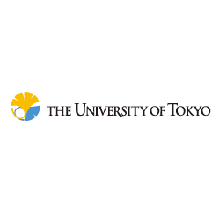THE ROLE OF E-RECRUITMENT AND SELECTION FUNCTIONS ON THE ORGANIZATIONAL OUTCOMES IN HELB, KENYA
THE ROLE OF E-RECRUITMENT AND SELECTION FUNCTIONS ON THE ORGANIZATIONAL OUTCOMES IN HELB, KENYA
Violyne Namukhosi Nguti - Master of Science Student, Jomo Kenyatta University Of Agriculture And Technology, Kenya
Thomas Mose - Lecturer, Jomo Kenyatta University Of Agriculture And Technology, Kenya
ABSTRACT
The Human Resource Management function has been on the forefront of integrating Technology in organizations. The twenty-first century has brought with it the ever-increasing effects of globalization and technology. Organizations are adopting the usage of technology to not only propel Human Resource to a new era and attain competitive advantage in a dynamic market space, but to also adapt to the needs of the ever-changing workforce. The main reason for carrying out this study was to provide insights into the role played by e-HRM functions in enhancing organizational commitment, employee satisfaction and employee engagement at the Higher Education Loans Board and beyond. There is need to make deliberate efforts in enhancing employee satisfaction, organizational commitment, and employee engagement since this translates to a workforce that has the drive to employ concerted efforts in enabling increased loan recoveries, reduce the default rate and generate innovative ideas to improve service delivery at the Higher Education Loans Board. The study particularly sought to assess the influence of e-recruitment and selection function, e-training and development function, e-compensation function and e-self-service function on the overall organization outcomes, in particular employee satisfaction, organizational commitment and employee engagement at the Higher Education Loans Board, Kenya. This in turn is to enable the Higher Education Loans Board to execute its mandate more effectively and efficiently while saving costs. The study’s specific objectives include; to examine the role of e-recruitment and selection function on organizational outcomes in Higher Education Loans Board, Kenya. The study employed a descriptive research design. Questionnaires were used as the main mode of data collection. Data collected was analyzed by use of statistical tools for data analysis namely, MS-Excel and Statistical Package for Social Sciences (SPSS). The study concludes that e-recruitment and selection function has a significant effect on the organizational outcomes in HELB, Kenya. In addition, the study found that e-compensation function also has a significant effect on the organizational outcomes in HELB, Kenya. The study findings, it is recommended that the management of the Higher Education Loans Board should optimize use of the online recruitment for fairness and objectivity in the entire process, enhance transparency and turn-around time.









